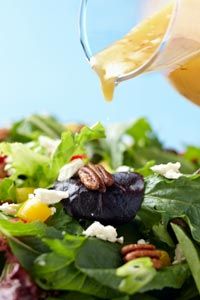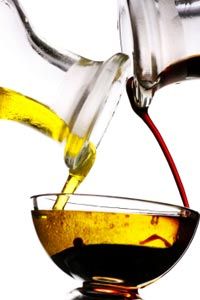Salads have long been synonymous with healthy eating, but it's not as simple as just grabbing a head of iceberg lettuce and a bottle of salad dressing. Depending on the size and ingredients, a dinner salad can be unhealthier than a cheeseburger. Even if you know to sprinkle on high-fat, high-calorie ingredients like bacon, croutons, cheese and nuts sparingly, there's still the problem of choosing a dressing.
Many regular salad dressings aren't all that healthy, and the portion sizes aren't realistic. For example, your basic ranch salad dressing has nearly 150 calories and 14 grams of fat. That's for a 2-tablespoon serving, but most of us aren't in the habit of measuring our salad dressing. You could be adding hundreds of calories to your otherwise healthy salad with just a squeeze of the bottle or a ladle from the salad bar.
Advertisement
Before we begin navigating the salad dressing pitfalls, think about your favorite kind. There are generally two types: creamy and vinegar-and-oil. Creamy dressings, such as blue cheese, have a base of sour cream, buttermilk or mayonnaise. Vinegar-and-oil dressings (or vinaigrettes) are just what they sound like -- Italian dressing is a popular example. In general, it's easier to find healthy vinegar-and-oil dressings, but if creamy dressings are your favorite, there's hope for you, too. Let's start with looking at how to choose a heart-healthy salad dressing.
Advertisement



